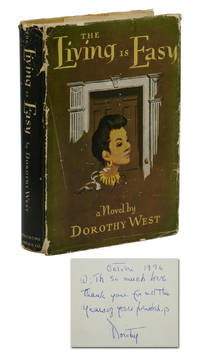African American Literature 1940-1949
-
Native Son by Richard Wright
After publishing Uncle Tom’s Children in the 1930s, Richard Wright was looking to write a novel about racism that moved beyond easy sentimentality. Native Son was that book; a protest novel, portraying the hopelessness caused by racism and poverty in inner cities in America. The novel is about Bigger Thomas, a twenty-year-old living in poverty in Chicago’s South Side in the 1930s. Thomas accidentally kills a white woman, then tries to hide the crime by decapitating her and incinerating her body. Desperate to escape, he is locked into a downward spiral, raping and killing his own girlfriend before being arrested and sentenced to death. The brutal portrayal was unlike anything that had previously been published, and the novel sold a quarter-million copies the first three weeks after publication in 1940.
Native Son was the first book of the month club selection by an African-American writer, but because of this selection, Wright was pressured to edit out certain scenes. Like Wright’s other works which were censored and edited, the book was later restored to its original edition in a 1991 reprint edited by Arnold Rampersad.
The first edition of Native Son was published by Harper & Brothers, New York, in 1940.
-
Blood on the Forge by William Attaway
The 1953 Popular Library paperback described Blood on the Forge as “A savage, realistic novel of twisted passions and naked violence set against the bleak and brutal background of the booming steel towns of Pennsylvania.”
Considered a proletarian novel of the Great Migration, it highlights the struggles of African American men trying to earn a living in America by following the story of three men from rural Kentucky to industrial Pittsburgh, and their lives set against the labor movements within the Steel industry. The novel is set in 1919, at a time after WWI when the mass migration from the rural South to the Industrial North began. Blood on the Forge was Attaway’s second and last novel. It was well-received critically but didn’t attain the success of similar radical Depression-era novels like Steinbeck’s Grapes of Wrath and Wright’s Native Son.
Blood on the Forge was first published by Doubleday, Doran and Co. Garden City, New York, in 1941.
-
For My People by Margaret Walker
The poet and novelist Margaret Walker was born in 1915 in Birmingham, Alabama. Her first book, For My People, won the Yale Younger Poets award, the first black woman to win this prestigious award. The title poem has remained a centerpiece in American poetry. Walker was also known for her novel Jubilee (1966) set in the South during the Civil War.
The first edition of For My People was published by Yale University Press, New Haven, in 1942.
-
The Case of Mrs Wingate by Oscar Micheaux
Oscar Micheaux was a pioneering African-American author and filmmaker. He is considered the first major African American feature filmmaker, producing both silent and sound films. Micheaux was born in Illinois in 1884. In addition to making films, he wrote and published seven novels in his lifetime, including The Conquest: The Story of a Negro Pioneer (1913) published anonymously, and The Homesteader (1918), which was optioned as a film, but when the producer turned down Michaeux’s involvement in the production, Micheaux began his own film company to produce the film. After the Great Depression Micheaux returned to writing. The Case of Mrs. Wingate is set during WWII and focuses on black Nazi spies and sinister German plots.
The Case of Mrs. Wingate was first published by Book Supply Company Publishers in 1944.
-
If He Hollers Let Him Go by Chester B. Himes
If He Hollers Let Him Go, is the first novel by writer Chester Himes. The story spans four days in the life of Bob Jones, an African-American shipyard worker in Los Angeles during WWII. Jones struggled to find his place in a white-dominated world overrun by racism. It is considered a ‘protest novel’ in the same vein as Richard Wright’s Native Son. In 1968 If He Hollers Let Him Go was adapted into a film, but it markedly bore little resemblance to the original book.
The first edition of If He Hollers, Let Him Go was published by Doubleday Douran in 1945.
-
The Street by Ann Petry
The Street tells the story of Lutie Johnson, a young woman trying to raise her son amongst the struggles and injustices of 1940s Harlem. Lutie places her trust in the American Dream and strives to work hard and save, following the edicts of Benjamin Franklin, to get her and her son out of the tenements. But while she does everything right, her world is ruled by sexism, poverty, and racism, and her dreams are brought crashing down by the weight of the street and the reckless violence of men’s desires.
The Street, Ann Petry's debut novel, became the first novel by a black woman to sell more than a million copies. The best-seller was widely reviewed, published in several paperback editions, and translated into French, Spanish, Japanese, and Portuguese.
The first edition of The Street was published by Houghton Mifflin Company in 1946.
-
Knock on Any Door by Willard Motley
Knock on Any Door is the first novel by Willard Motley, and considered by many to be his best. It was the most popular of Motley's books, selling 47,000 copies in the first three weeks.
It is the story of a young immigrant, Nick Romano, and his tragic descent from altar boy to death row. Set in the streets of Chicago, the novel shows the dark underbelly of the American Dream. Humphrey Bogart starred in and financed the 1949 noir adaptation of the novel. Nick Romano's character famously said in the novel, "Life fast, die young, and leave a good-looking corpse."
Knock on Any Door was first published by Appleton-Century-Crofts, New York, in 1947.
-
The Living is Easy by Dorothy West
The Living is Easy is the debut novel of Dorothy West. West is heavily associated with the Harlem Renaissance and was acquaintances with many prominent writers during the era, including Langston Hughes. She and Hughes spent a year in Russia making a film about race relations (it was not released). From 1934-1937 West published the magazine Challenge.
The Living is Easy is a novel about a young Southern girl in pursuit of an upper-class lifestyle. It is one of only a handful of novels published by women during the Harlem Renaissance.
The first edition of The Living is Easy was published in 1948 by Houghton Mifflin Company, Boston. In 1982 The Feminist Press brought The Living is Easy back into print.
-
Last of the Conquerors by William Gardner Smith
Last of the Conquerors, by and about an African-American GI in Occupied Germany, is William Gardner Smith’s first novel, written while on a boat returning from WWII when he was just 19 years old. The main character, Hayes Dawkins, mainly through his relationship with a white German woman, finds post-Nazi Germany to be more racially tolerant than the United States he served for and must return to.
The original paperback cover of the novel was the first by James Avati, known as “Father of Paperback Book Covers”.
The first printing of the paperback edition of Last of the Conquerors was published by Signet, New York, in 1949.
Subscribe
Sign up for our newsletter and receive coupons via email.

Author Bio: Amy C. Manikowski is a writer, bookseller, trail-diverger, history buff, and pitbull lover. She graduated from Chatham University with an MFA a while ago, and after wandering aimlessly settled in Asheville NC.









